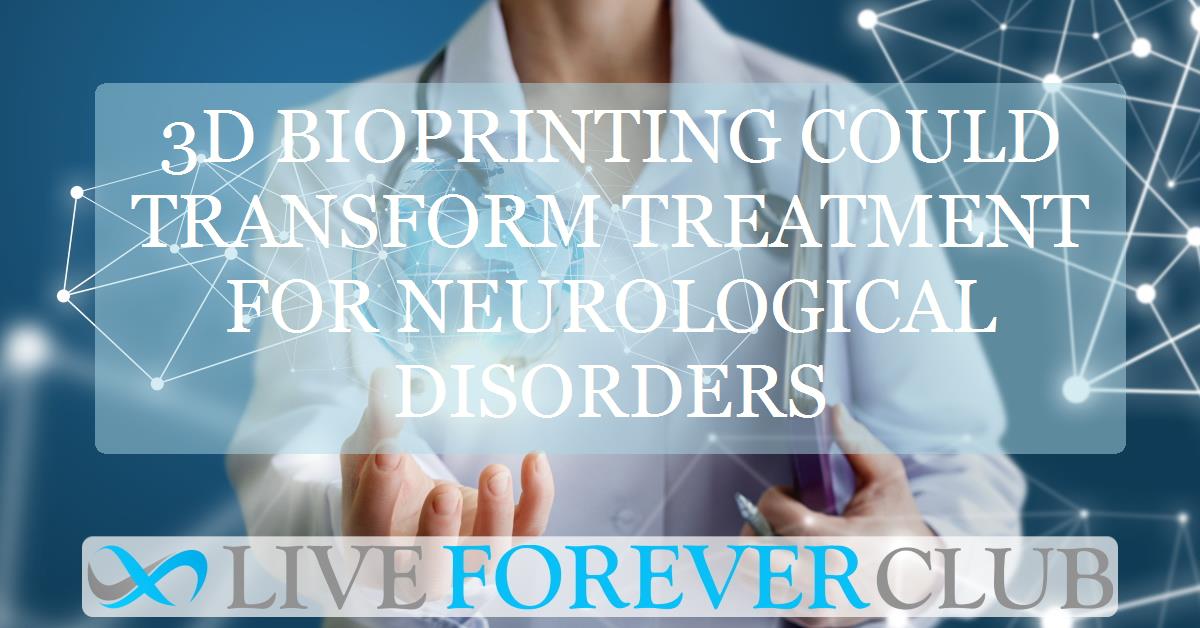Neurological disorders are among the toughest challenges faced by modern medicine. From Alzheimer’s and Parkinson’s disease to spinal cord injuries and peripheral neuropathies, these conditions often rob people of mobility, independence, and quality of life. Traditional therapies mostly focus on slowing decline or reducing symptoms, but rarely on actually restoring lost function.
This is where 3D bioprinting enters the scene. Imagine building tiny, living structures that mimic the architecture and activity of the nervous system. Using specialized printers and bioinks made of living cells and supportive materials, scientists are beginning to design and fabricate neural tissue that could one day replace damaged areas or guide the body to heal itself.
This blog explores the groundbreaking potential of 3D bioprinting in neural repair. We’ll look at its evolution, current applications, challenges, ethical questions, and the exciting future it promises for personalized regenerative medicine.
From Simple Models to Complex Neural Tissues
For decades, scientists studied the nervous system using animal models and flat cell cultures. While these tools provided insights, they couldn’t fully capture the complexity of human brain and nerve tissue. The nervous system is not only highly specialized but also intricately organized.
The transition from 2D cultures to 3D organoids was a big leap forward. Organoids—miniature, simplified versions of organs grown from stem cells—offered more realistic environments. They allowed researchers to study how diseases develop and test new drugs more effectively. However, organoids tend to form spontaneously, leading to unpredictable results and limited control.
3D bioprinting takes things a step further. It gives researchers the ability to design tissue with precision. Instead of waiting for cells to self‑organize, scientists can place them exactly where they’re needed, building neural networks that resemble the real thing more closely.
Why 3D Bioprinting Matters for Neurology
The nervous system has an extremely limited ability to regenerate, especially in the brain and spinal cord. Peripheral nerves can sometimes heal, but large injuries often require surgery. Current treatments rarely restore full function.
3D bioprinting opens up possibilities such as:
Creating patient‑specific models for drug testing and disease research.
Engineering scaffolds that guide nerves to regrow across injury gaps.
Printing living constructs filled with neurons and support cells to replace damaged tissue.
The technology allows for precise customization, which is vital given that every part of the nervous system—whether the spinal cord, brain cortex, or peripheral nerves—has unique requirements.
Bioprinting for Disease Modeling and Drug Testing
One of the first and most practical applications of 3D bioprinting is disease modeling. Scientists can now print neural tissues that mimic conditions like Alzheimer’s, Parkinson’s, or ALS. These models often show disease patterns more accurately than traditional 2D cultures, such as protein buildup or loss of certain neurons.
This opens the door for better drug testing. Pharmaceutical companies can use these models to test how new treatments interact with human‑like neural tissue before moving to clinical trials. It also reduces reliance on animal models, which often don’t translate well to humans.
High‑throughput platforms are also on the horizon, where thousands of tiny 3D‑printed neural samples could be tested simultaneously. This could dramatically accelerate the pace of discovery while lowering costs.
Cell‑Free Bioprinted Scaffolds: Guiding the Body to Heal
Not all bioprinted constructs contain living cells. In fact, one promising approach is the creation of cell‑free scaffolds. These are specially designed structures that provide guidance and support for the body’s own repair processes.
In peripheral nerve injuries, for example, these scaffolds act as bridges, connecting severed nerve ends so axons can regrow across the gap. In spinal cord injuries, they may provide a framework that reduces scar formation while delivering growth factors to encourage nerve sprouting.
These scaffolds can be tailored to the patient’s specific injury. They may include channels for nerve fibers, gradients of growth molecules, or even conductive materials to help restore electrical activity. While they don’t directly replace lost cells, they create a healing environment that supports the body’s own regenerative potential.
Bioprinted Neural Tissue: Replacing What’s Lost
For severe injuries or progressive diseases, scaffolds alone may not be enough. This is where cell‑laden constructs come in. These are bioprinted tissues that already contain living neurons, glial cells, or stem cells. The goal is not just to guide repair but to actually replace the lost tissue.
In the peripheral nervous system, embedding Schwann cells into bioprinted nerve conduits can accelerate axonal regrowth, mimicking the body’s natural repair structures. In the central nervous system, bioprinted grafts loaded with neural stem cells have shown promise in repairing spinal cord injuries. Some animal studies have demonstrated restored motor function after such implants.
Looking further ahead, bioprinted brain tissues could one day help treat conditions like epilepsy, Huntington’s disease, or Parkinson’s, where specific neuronal populations are lost. By using stem cells derived from the patient, the risk of immune rejection could also be minimized.
Challenges on the Road Ahead
Despite incredible progress, bioprinting for neural repair is still in its infancy. Several hurdles must be overcome before it can become a clinical reality:
Complexity of neural tissues
The brain and spinal cord contain many different types of neurons and supporting cells. Printing tissues that accurately replicate this diversity is a major challenge.
Integration with blood supply
Without blood vessels, large constructs cannot survive. Techniques for printing vascular networks are advancing but remain difficult for neural tissues.
Functional connectivity
Neurons need to connect properly to form working circuits. Achieving true communication between implanted cells and the host nervous system is essential.
Scalability
Printing large, complex tissues is time‑consuming. Current technology is far too slow to produce organ‑sized constructs for human use.
Long‑term stability
Even if a construct integrates initially, it must survive and function for years without breaking down or causing harm.
The Role of Supporting Technologies
Bioprinting does not stand alone. Several complementary technologies are helping to push the field forward:
Electrical stimulation systems to guide neural growth and improve function.
Bioreactors and microfluidics to provide nutrients, oxygen, and mechanical stimulation for large constructs.
Conductive biomaterials like graphene or specialized polymers to support electrical activity within printed tissues.
Embedded biosensors to monitor chemical signals or neural activity in real time.
Together, these tools are making bioprinted neural constructs more realistic, functional, and suitable for eventual clinical use.
Ethical and Regulatory Hurdles
Alongside technical challenges, ethical questions loom large. Using embryonic stem cells raises moral debates, while induced pluripotent stem cells, though ethically less contentious, come with variability and safety concerns.
As printed brain models become more sophisticated, some worry about the possibility of them achieving rudimentary consciousness. Although current models fall far short of this, the concern highlights the need for strict oversight.
Regulation is also complex. Unlike traditional drugs or medical devices, bioprinted tissues combine living cells, biomaterials, and sometimes electronic components. Existing laws don’t fully address these combinations. New frameworks will be needed to ensure patient safety, product consistency, and ethical use.
A Future of Personalized Neural Repair
The future of 3D bioprinting in neurology is not about one universal solution. Different conditions will require different strategies:
Drug testing platforms for Alzheimer’s and Parkinson’s.
Custom nerve conduits for peripheral injuries.
Stem cell‑laden grafts for spinal cord repair.
Patient‑specific brain tissues for neurodegenerative and developmental disorders.
With interdisciplinary collaboration among neuroscientists, engineers, material scientists, and clinicians, the vision of personalized regenerative therapies is coming into focus.
Conclusion
3D bioprinting is rewriting the possibilities of regenerative medicine for the nervous system. What began as experimental models is now edging closer to therapies that could restore function after devastating neurological injuries and diseases.
The road ahead is filled with technical, ethical, and regulatory challenges. Yet, each obstacle also presents an opportunity for innovation. Advances in biomaterials, bioelectronics, and stem cell biology are steadily converging, bringing us closer to the day when printing functional neural tissue is not just a laboratory achievement but a clinical reality.
In the years to come, 3D bioprinting could transform how we treat neurological disorders—moving from managing symptoms to truly repairing the nervous system, and perhaps one day, restoring lives once thought beyond recovery.
The study is published in the journal Advanced Materials. It was led by researchers from University of Wollongong.







